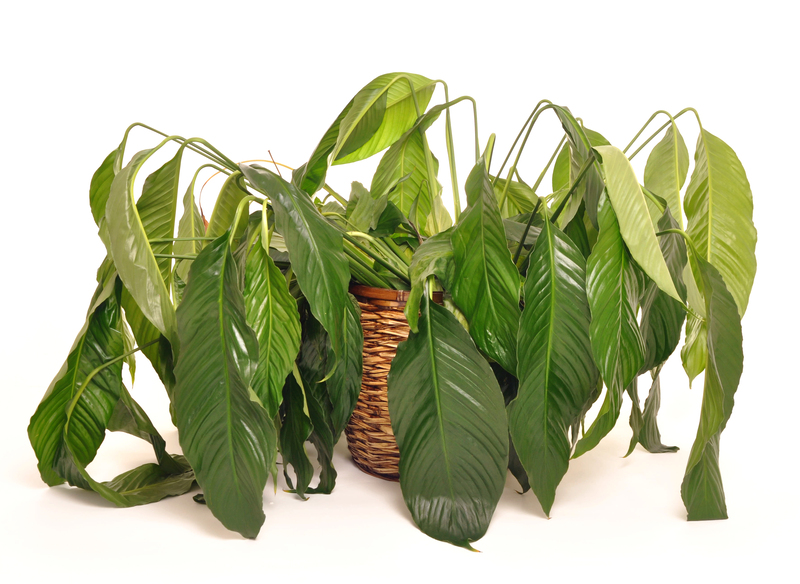Step-by-Step Orchid Care Tips
Posted on 19/05/2025
Step-by-Step Orchid Care Tips: Your Comprehensive Guide to Thriving Orchids
Orchids are exquisite and versatile houseplants that are renowned for their unique blossoms and captivating beauty. However, effective orchid care is essential for these delicate flowers to flourish indoors. Whether you are a beginner or seasoned enthusiast, following the right step-by-step orchid care tips can ensure your orchids remain lush, healthy, and always in bloom. This comprehensive guide will walk you through each stage of orchid care, from selecting the perfect plant to nurturing stunning floral displays.

Understanding Your Orchid: Know Your Type
Before diving into orchid maintenance, it's critical to recognize the variety of orchid you have, as care requirements may slightly differ among species.
Popular Types of Orchids and Their Differences
- Phalaenopsis (Moth Orchid): Best for beginners, long-lasting flowers, prefers indirect light.
- Cattleya: Known for their vibrant blooms, need brighter light and good airflow.
- Dendrobium: Require a distinct rest period between blooms, versatile to various conditions.
- Oncidium: Often called the "dancing lady," they prefer cooler temperatures and high humidity.
Knowing your orchid's species enables you to tailor your care approach for optimal health and continued flowering.
Step 1: Optimal Lighting for Vibrant Orchids
Light is a critical factor in successful orchid cultivation. Inadequate or excessive light can impede growth and blooming.
How Much Light Do Orchids Need?
- Phalaenopsis: Enjoys bright, indirect sunlight; avoid direct summer sun, which can scorch leaves.
- Cattleya: Thrives in bright light or an east/south-facing window with sheer curtains.
Pro Tip: If an orchid's leaves are dark green, it may need more light. Reddish or yellowish leaves can indicate too much sun.
Step 2: Watering Your Orchid Correctly
Watering orchids properly is often the most challenging step for indoor gardeners. Overwatering is a common mistake, while underwatering may lead to shriveled roots and poor growth.
How Often Should You Water Orchids?
- Generally, water once a week for most varieties; adjust frequency based on humidity, temperature, and potting medium.
- Let the media (e.g., bark, moss) dry slightly between waterings.
- Use room-temperature, distilled, or rainwater for best results.
Remember, orchids prefer dryness over being waterlogged. Poor drainage is the fastest way to kill an orchid.
Watering Technique: A Step-by-Step Process
- Identify when the potting medium is nearly dry.
- Place the plant in a sink or basin.
- Run water through the pot for 10-15 seconds.
- Allow all excess water to drain before returning the orchid to its spot.
Step 3: Ensuring Proper Humidity
Humidity levels are essential for orchid vitality. Most orchids thrive best in a humidity range between 40% and 60%.
Effective Ways to Increase Humidity
- Group orchids together to create a natural humid micro-environment.
- Place orchid pots on a tray filled with pebbles and water, ensuring roots are not submerged.
- Use a room humidifier for consistent results.
Monitor humidity with a hygrometer to maintain optimal conditions year-round.
Step 4: Choosing the Right Potting Medium
Orchids are unique in that they require a specialized potting mix, not regular soil. Choosing the right orchid substrate supports healthy root development and prevents rot.
Recommended Orchid Potting Mixes
- Bark chips (fir, pine, or redwood)
- Sphagnum moss or coconut husk chips for moisture retention
- Perlite or charcoal for improved aeration
Repot your orchid every 1-2 years, or when the mix breaks down and becomes compacted. Repotting helps prevent disease and encourages new root growth.
Step 5: Feeding Orchids - Fertilizing Tips
Fertilizing orchids is another essential task for promoting lush foliage and vibrant blooms.
How to Feed Orchids Properly
- Use a balanced water-soluble fertilizer (20-20-20 or orchid-specific blends).
- Apply fertilizer every 2-4 weeks during active growth; reduce or halt feeding during dormancy.
- Dilute fertilizer to half or a quarter of the label's strength to avoid root burn.
- Flush the pot with plain water monthly to prevent nutrient buildup.
Tip: "Weakly, weekly" is a popular orchid feeding mantra. Using diluted fertilizer more often is safer than infrequent heavy doses.
Step 6: Pruning and Deadheading Orchids
Pruning is an important aspect of orchid plant care for maintaining vigor and encouraging re-blooming.
When and How to Prune Orchids
- Remove dead or yellowed leaves and spent flower spikes with sterilized scissors.
- For Phalaenopsis, after blooms fade, trim the spike above a visible node to encourage a new branch or cut at the base if the stem has turned brown.
- Leave green spikes intact, as new flowers may bud from them.
Always sterilize tools before pruning to prevent disease transmission between plants.
Step 7: Orchids and Air Circulation
Good airflow helps orchids avoid fungal diseases, pests, and root rot.
How to Improve Air Circulation
- Place orchids where gentle air movement is present, such as near a fan or an open window (avoiding cold drafts).
- Rotate your orchid pots occasionally to evenly expose all sides to light and air.
Insufficient air circulation is one of the main triggers for mold and bacterial problems in orchids.
Step 8: Recognizing and Treating Orchid Pests and Diseases
Even with the best care for orchids, pests and diseases can occasionally strike. Early intervention is crucial for saving your plant.
Common Orchid Pests
- Mealybugs: White, cottony insects found on leaves and roots.
- Spider mites: Tiny red or yellow pests that leave a fine webbing, cause speckled or yellowed leaves.
- Aphids and scale: Can weaken orchids and spread sticky residue.
Common Orchid Diseases
- Root rot: Caused by excess moisture; roots turn black and mushy.
- Leaf spot: Fungal or bacterial infections causing spots or yellowing.
Effective Solutions for Orchid Problems
- Remove affected areas promptly.
- Use insecticidal soap or neem oil for pests.
- Repot in fresh medium if root rot occurs, and reduce watering.
Encouraging Blooming: Pro Orchid Flowering Secrets
While simply keeping orchids alive is an achievement, prompting graceful blooms is every grower's dream.
Tips for Regular Orchid Flowering
- Maintain a 10-15?F temperature drop between day and night to trigger spikes (especially in Phalaenopsis and Cattleya orchids).
- Verify that your orchid is receiving sufficient light and nutrients.
- Do not relocate blooming orchids, as sudden changes can cause bud drop.
Patience is key: some orchids bloom just once per year for a few weeks, while others may offer multiple displays.
Troubleshooting: Common Orchid Growth Issues
- Wrinkled leaves: Usually a sign of underwatering or poor root health.
- Yellow leaves: Normal for older leaves, but in excess, may signal overwatering, too much fertilizer, or light issues.
- No blooms: Review your plant's temperature cycles, lighting, and feeding regimen, as inadequate care may delay flowering.
Don't give up--most orchid problems can be solved with proper diagnosis and a little TLC!
Best Practices for Year-Round Orchid Plant Care Success
- Monitor your orchids daily for water needs, pests, and general health.
- Repot before the growing season, ideally after flowering, to avoid shock.
- Ensure your orchid is never exposed to freezing temperatures or excessive heat.
- Keep leaves dry, especially in the crown, to avoid rot.

FAQs About Caring for Orchids Indoors
How much sunlight is too much for orchids?
Direct sun during peak hours can scorch leaves, leading to sunburn. Orchids typically prefer bright but filtered light.
Can I use regular potting soil for orchids?
No. Orchids require open, airy mixes like bark chips or sphagnum moss to allow proper root aeration.
How do I revive a weak orchid?
Analyze root health, repot if necessary, adjust watering habits, and provide appropriate light and humidity. Patience and proper care can restore most struggling orchids.
Summary: Mastering Step-by-Step Orchid Care
By following these detailed step-by-step orchid care tips, you will be equipped to grow thriving, long-lasting orchid plants. Remember, each orchid is unique, so observe your plant's signals and adjust care accordingly. With consistency and attention, even beginners can enjoy the stunning blooms and elegant foliage that make orchids so prized among indoor plants.
For more expert orchid care guides and troubleshooting advice, bookmark this article or share with other orchid lovers. Start your journey today, and transform your home into a paradise of flourishing orchids!

